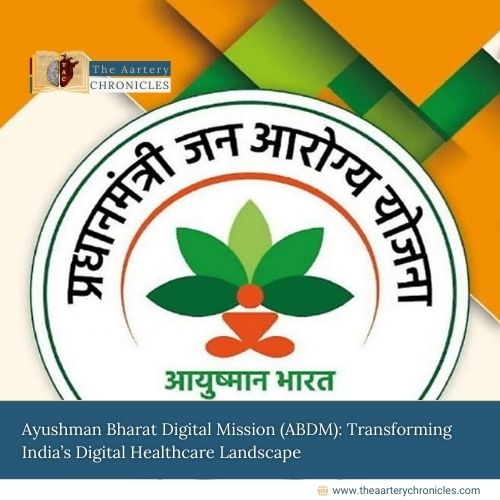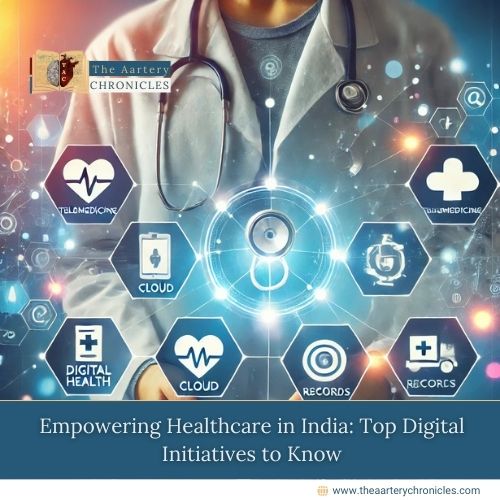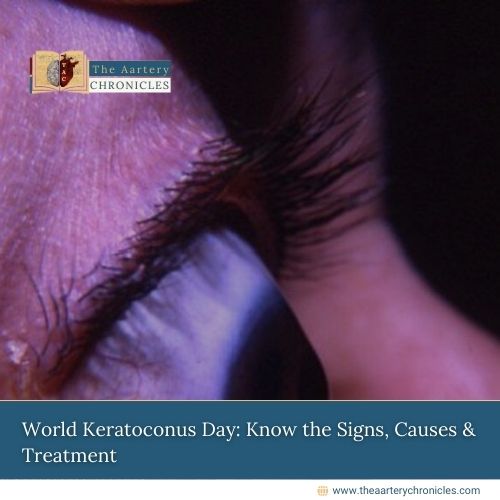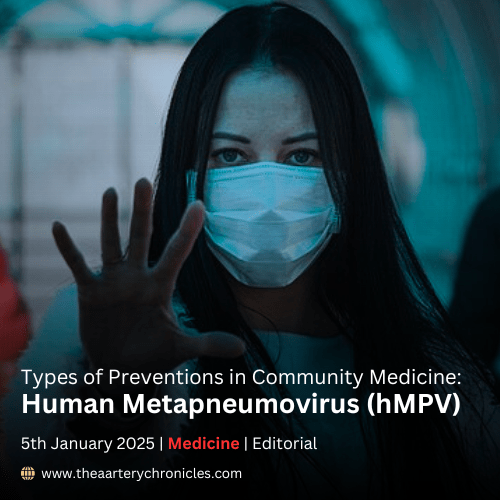
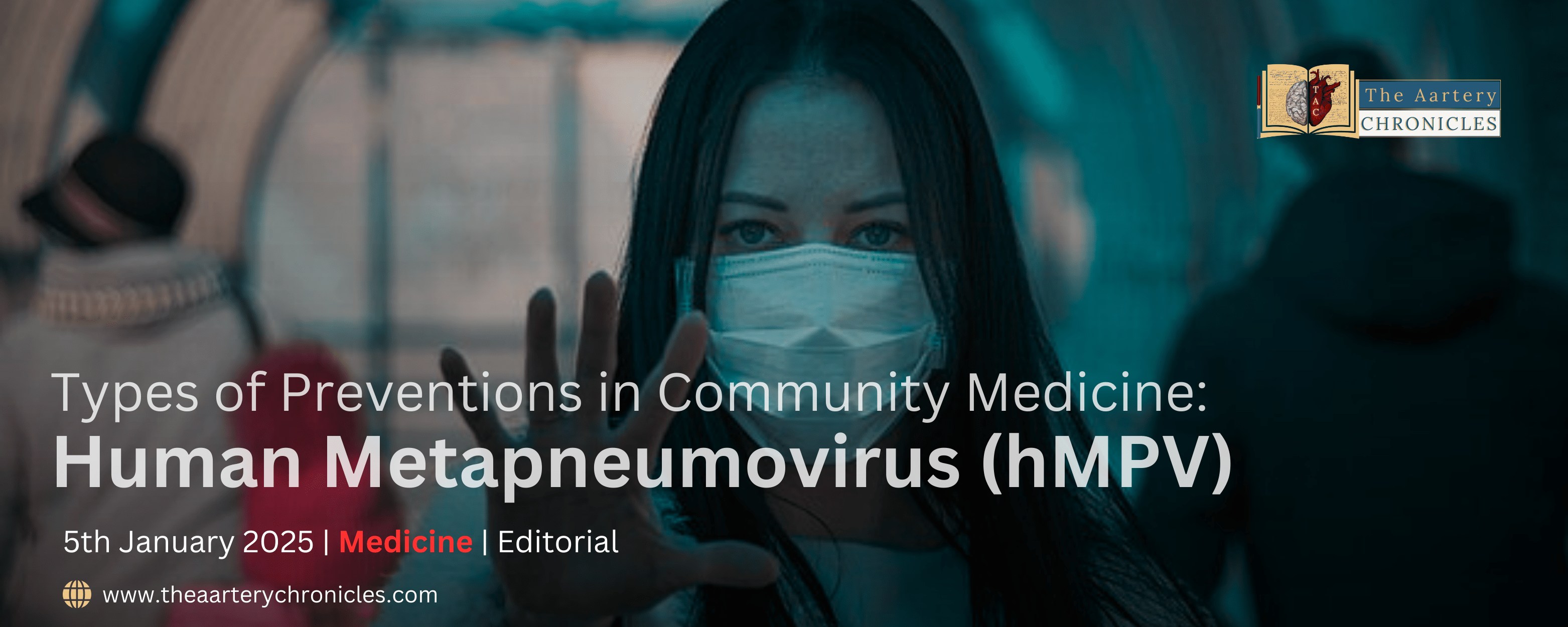
Types of Preventions in Community Medicine: Human Metapneumovirus (hMPV)
Explore prevention strategies for Human Metapneumovirus (hMPV) across four levels: primordial, primary, secondary, and tertiary, to reduce its impact.
India, a nation with a rich history encompassing mythologies, great empires, and diverse systems of governance, also stands as a prominent hub for healthcare. It is among the few countries where allopathic medicine coexists with various traditional branches of medicine, often working collaboratively—albeit not always seamlessly.
In this land of cultural and scientific wealth, numerous public health challenges persist, including infectious diseases, lifestyle-related conditions, road traffic accidents (RTAs), suicides, and criminal activities.
A Recent Development
The recent spike in discussions surrounding hMPV has drawn attention to its potential to cause alarming symptoms, including increased heart rates among Healthcare authorities all over the world. If you haven’t already, you might want to check out Priya Bairagi’s insightful article titled “New Virus Alert: Is India at Risk from China’s HMPV?” for a detailed exploration of the emerging concerns surrounding this virus.
While these issues warrant attention, our focus here is on a fundamental yet frequently overlooked aspect of public health: prevention. By delving into prevention strategies, we can address health challenges more effectively. To illustrate this concept, we will examine prevention techniques through the example of Human Metapneumovirus.
Types of Preventions in Community Medicine
Prevention is a cornerstone of public health and community medicine. It aims to reduce the burden of disease and promote overall well-being. Prevention is categorised into four levels: primordial, primary, secondary, and tertiary. Each level addresses a different stage of disease progression and serves a distinct purpose in maintaining and improving public health. Let’s explore each type in detail.
Eliminating Risk Factors at the Source
This level focuses on preventing the emergence or establishment of risk factors. It targets social and environmental conditions that increase the risk of disease and aims to promote healthy behaviours and environments—for example, advocating for policies to reduce air pollution or promoting healthy diets and physical activity to prevent lifestyle diseases.
Vaccination, Immunisation, Health Education
Primary prevention aims to prevent the occurrence of disease by controlling specific risk factors or enhancing resistance. This includes vaccination programs, health education, and lifestyle modifications. For example, administering vaccines to prevent infectious diseases or promoting safe water practices to avoid waterborne diseases.
Screening, Early Diagnosis, Timely Intervention
Secondary prevention involves early detection and prompt intervention to halt the progression of disease. It includes regular screenings, diagnostic tests, and early treatment. For instance, conducting mammograms for early detection of breast cancer or blood pressure monitoring for hypertension.
Disease Management, Rehabilitation, Quality of Life
This level focuses on minimising the impact of established diseases by managing complications, promoting recovery, and improving quality of life. Examples include rehabilitation programs, chronic disease management, and palliative care.

Human Metapneumovirus (hMPV)
Human Metapneumovirus (hMPV) is a significant respiratory pathogen responsible for acute respiratory tract infections, particularly in young children, older adults, and immunocompromised individuals. First identified in 2001, hMPV shares similarities with the respiratory syncytial virus (RSV) and can cause severe lower respiratory tract infections, including bronchiolitis and pneumonia.
Despite its global prevalence, public awareness of hMPV remains limited. Prevention strategies are critical in managing the burden of hMPV infections. In this discussion, we will explore the four levels of prevention: primordial, primary, secondary, and tertiary, and their application to hMPV.
Clinical Details of hMPV:
- Incubation Period: Typically 4-6 days after exposure.
- Mode of Transmission: Primarily via respiratory droplets and direct contact with contaminated surfaces.
- Symptoms: Fever, cough, nasal congestion, wheezing, shortness of breath, and, in severe cases, respiratory distress.
- Risk Groups: Infants, young children, elderly individuals, and immunocompromised patients.
- Complications: Severe bronchiolitis, pneumonia, respiratory failure, secondary bacterial infections, and prolonged hospitalisation.
- Diagnosis: Polymerase Chain Reaction (PCR) testing, viral culture, and antigen detection assays.
- Treatment: Supportive care, including oxygen therapy, hydration, and symptom management. No specific antiviral treatment is currently available.
FAQ
How is Human Metapneumovirus (hMPV) Managed?
How is Human Metapneumovirus (hMPV) Managed?
Currently, there are no specific antiviral medications available to treat Human Metapneumovirus (hMPV). Most individuals can manage their symptoms at home with adequate rest, hydration, and over-the-counter medications for fever or discomfort.
However, in severe cases—especially in young children, older adults, or immunocompromised individuals—hospitalisation may be necessary. In such settings, healthcare providers focus on supportive care to manage symptoms and prevent complications.
Treatment options may include:
Oxygen Therapy: If breathing becomes difficult, supplemental oxygen may be delivered via a nasal tube or face mask.
IV Fluids: Intravenous fluids help maintain hydration, especially in cases of severe illness.
Corticosteroids: These medications may be used to reduce inflammation in the airways and alleviate symptoms.
Do You Need Antibiotics for Human Metapneumovirus?
Do You Need Antibiotics for Human Metapneumovirus?
No, antibiotics are ineffective against hMPV because it is a viral infection. Antibiotics only target bacterial infections.
However, in some cases, individuals with hMPV may develop a secondary bacterial infection, such as bacterial pneumonia. In such situations, healthcare providers may prescribe antibiotics to treat the secondary bacterial infection, not the virus itself.
Preventive Measures for hMPV
Primordial Prevention: Primordial prevention aims to address the underlying social, environmental, and economic factors contributing to the risk of hMPV infections.
- Promote public awareness about respiratory hygiene practices.
- Advocate for policies to reduce overcrowding in public spaces and improve air quality.
- Encourage improved ventilation systems in schools, childcare centres, and healthcare facilities.
- Address social determinants of health, including nutrition and housing conditions, to strengthen community resilience against infections.
Primary Prevention: Primary prevention focuses on preventing the occurrence of hMPV infections by targeting specific risk factors.
- Educate the public about proper hand hygiene and cough etiquette.
- Promote the use of masks during respiratory infection outbreaks.
- Encourage vaccination research and development for hMPV.
- Train healthcare workers on infection control practices to prevent nosocomial transmission.
Secondary Prevention: Secondary prevention aims to detect hMPV infections early and implement prompt interventions to prevent complications.
- Conduct routine surveillance and testing for hMPV during respiratory infection outbreaks.
- Implement rapid diagnostic tests in high-risk settings, such as hospitals and paediatric clinics.
- Provide antiviral medications and supportive therapies for symptomatic patients.
- Isolate confirmed cases in healthcare facilities to prevent transmission.
Tertiary Prevention: Tertiary prevention focuses on managing complications from hMPV infections and improving patient outcomes.
- Provide respiratory support, including oxygen therapy and mechanical ventilation, for severe cases.
- Implement pulmonary rehabilitation programmes for patients recovering from severe respiratory illness.
- Offer psychological support for patients and families affected by prolonged hospital stays.
- Monitor long-term respiratory complications in recovered individuals, especially children and immunocompromised patients.
Conclusion
The prevention of Human Metapneumovirus (hMPV) infections requires a multi-level approach, addressing the disease at different stages. From addressing social determinants to managing severe complications, each level of prevention plays a vital role in reducing the burden of hMPV. Strengthening public health initiatives, investing in vaccine research, and improving community awareness are essential steps towards mitigating the impact of hMPV and enhancing global respiratory health.
References and Further Reading:

Dr Darshit Patel, MD General Medicine
Published: 5th January 2025 | Reviewed by Dr Aarti Nehra (MBBS, MMST)


